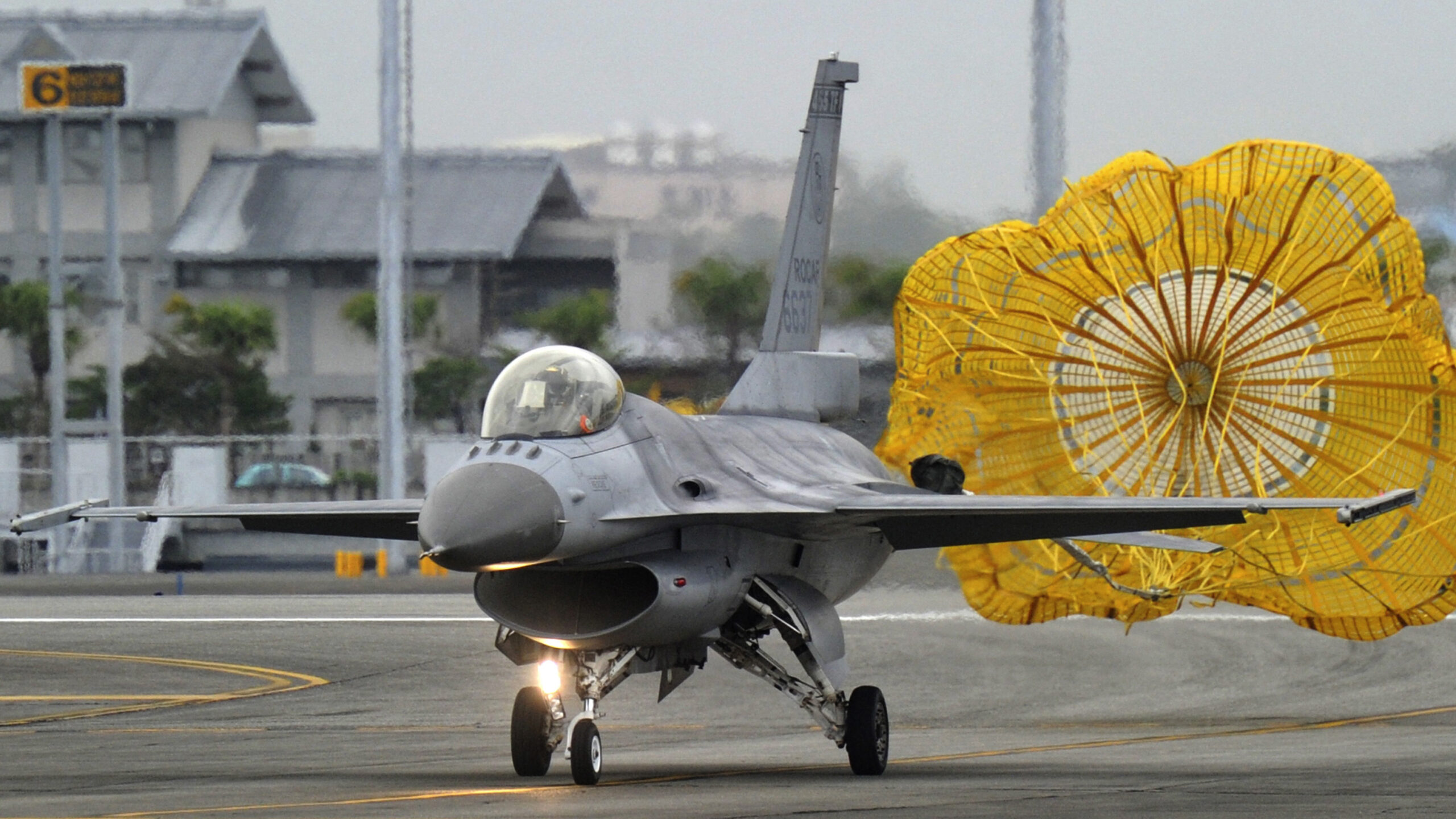The Republic of China Air Force (ROCAF) was assessing the damage today after Taiwan’s strongest earthquake in at least a quarter of a century. While details are currently limited, several recently upgraded F-16 fighters were left damaged at an airbase close to the epicenter of the 7.2-magnitude quake.
The ROCAF confirmed that six F-16s were “slightly damaged” at Hualien Air Base, one of the service’s most important facilities, according to a Reuters report. Other reports out of Taiwan put the number of damaged jets at eight.

The quake struck just offshore the county of Hualien, on the eastern side of the island, at around 8:00 a.m. local time, triggering massive landslides and collapsing buildings. The area around Hualien is significantly less populated than the western side of the island, but at least nine people were killed and more than 900 injured. Many others were reported missing.
The powerful quake could be felt across Taiwan and as far away as parts of mainland China and Japan. The earthquake was ranked as 7.4 on the Richter scale, classing it as a ‘major’ quake. This is powerful enough to cause damage to most buildings, making some partially or completely collapse.

Exactly what kind of damage the F-16s received is unclear, although the ROCAF claims that the aircraft are expected to return to service soon. The service did not disclose whether any other assets or infrastructure at Hualien Air Base were also affected, or if operations had to be stood down.
However, Taiwanese media reports claim that the earthquake caused damage to buildings at the base, too, including cracks and wall collapses that affected bunkers, hangars, and barracks.
Hualien Air Base plays a major role in responding to incursions by Chinese military aircraft. Scrambles from the base are now more frequent since Beijing has increasingly sent its forces around Taiwan, operating off the east coast as well as practicing ‘encircling’ maneuvers.

The damage caused by the earthquake ”may cause air defense dispatch problems in the face of frequent intrusions from the mainland,” the China Times reported.
Soon after the quake, Taiwan’s Ministry of National Defense reported that 30 People’s Liberation Army (PLA) aircraft and nine PLA Navy vessels had been identified operating around Taiwan. These were detected up until 6 a.m. local time, immediately before the earthquake. The ministry said that 20 of the aircraft entered Taiwan’s Northern, Middle Line, and Southwest Air Defense Identification Zone (ADIZ) and the Taiwanese military ”monitored the situation and employed appropriate force to respond.”
While unclear wether the earthquake affected the response to this incursion, it reiterates the general scale and intensity of PLA aircraft and warship activities around Taiwan.
As to the aircraft involved in the earthquake, these were upgraded F-16Vs, currently the most advanced fighters available to the ROCAF.
Last December, The War Zone reported on the completion of Taiwan’s F-16V upgrade, which is known locally as the Feng Zhan (Phoenix Rising) program.
Taiwan was the first F-16 operator anywhere in the world to field combat-capable F-16Vs and a total of 141 of its original F-16A/B Block 20 aircraft have been upgraded, reportedly at a cost of around $4.5 billion.
In November 2021, as we reported at the time, Taiwan officially introduced to service its first wing of upgraded F-16Vs, at Chiayi Air Base in the southwest of the country.

At the heart of the F-16V’s range of advanced new capabilities is the Northrop Grumman AN/APG-83 Scalable Agile Beam Radar (SABR), with an active electronically scanned array (AESA). This provides the jet with much-improved detection and engagement ranges, fidelity, the ability to spot low-flying small signature targets (like cruise missiles), and electronic countermeasures resistance. You can read all about the SABR in this previous feature.
Among the other enhancements are a new center pedestal display for the pilot and airframe modifications, including strengthened landing gear, for heavier fuel and weapons loads. These weapons include the AGM-84 Harpoon missile, which has long been carried for anti-shipping missions, while new stores include the AGM-88 High-Speed Anti-Radiation (HARM) missile for defense suppression, the AGM-154 Joint Stand-Off Weapon (JSOW), and the Standoff Land Attack Missile Expanded Response (SLAM-ER).

Ultimately, the F-16V is just part of the modernization of the ROCAF fighter fleet, with Taiwan also acquiring 66 new-build Block 70 F-16C/D jets, these being new production aircraft completed to a similar general configuration as the F-16V. The first deliveries of these jets have been delayed but should begin this year.
The F-16 fleet plays a vital role in the ROCAF’s efforts to try and dissuade a potential invasion from the mainland, and any losses, or temporary unavailability will be keenly felt.
As we await more information on the effects of the earthquake on Taiwan’s Vipers — as well as potentially other elements of its armed force — today’s events are a reminder that the island has to contend with natural disasters as well as the threat from China, which has not ruled out using force to seize it.
Contact the author: thomas@thewarzone.com
